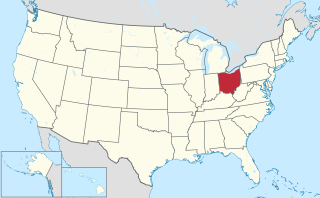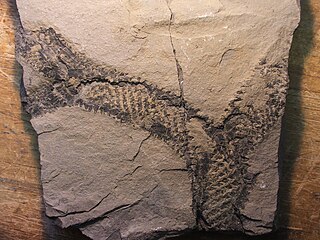| Isoetopsida | |
|---|---|
 | |
| Scientific classification | |
| Kingdom: | |
| Division: | |
| Class: | Isoetopsida |
| Orders | |
| Synonyms | |
| |
The Isoetopsida is a class of Lycopodiophyta. All extant species belong to the genus Selaginella in the order Selaginellales or to the genus Isoetes in the order Isoetales. In the past, members of this group sometimes have been placed in the classes Isoetopsida, Selaginellopsida, or Lycopodiopsida. There are c. 700 species of Selaginella and 140-150 species of Isoetes, with a cosmopolitan distribution, but often scarce to rare. Both orders are heterosporous. Some botanists split Isoetes by separating two South American species into the genus Stylites. [2]

The Division Lycopodiophyta is a tracheophyte subgroup of the Kingdom Plantae. It is one of the oldest lineages of extant (living) vascular plants and contains extinct plants like Baragwanathia that have been dated from the Silurian. Members of Lycopodiophyta were some of the dominating plant species of the Carboniferous period. These species reproduce by shedding spores and have macroscopic alternation of generations, although some are homosporous while others are heterosporous. Most members of Lycopodiophyta bear a protostele, and the sporophyte generation is dominant. They differ from all other vascular plants in having microphylls, leaves that have only a single vascular trace (vein) rather than the much more complex megaphylls found in ferns and seed plants.

Selaginella is the sole genus of vascular plants in the family Selaginellaceae, the spikemosses or lesser clubmosses.

Isoetes, commonly known as the quillworts, is a genus of plants in the family Isoetaceae. They are lycopods and the only genus in Isoetaceae. There are currently 192 recognized species, with a cosmopolitan distribution but with the individual species often scarce to rare. Some botanists split the genus, separating two South American species into the genus Stylites, although molecular data place these species among other species of Isoetes, so Stylites does not warrant taxonomic recognition.
Some prefer the name SelaginellopsidaA.B. Frank 1877, which has priority over "Isoetopsida"; the latter was not published until 1885. However, priority does not apply above the rank of family. Recent articles favor "Isoetopsida" because "Selaginellopsida" sometimes is ambiguously used: it may denote the same membership as Isoetopsida as described herein or it may include only the order Selaginellales.
| Lycopodiophyta |
| ||||||||||||||||||||||||||||||
Lepidodendron – also known as the scale trees – is an extinct genus of primitive, vascular, tree-like plants related to the isoetes (quillworts) and lycopsids. They were part of the coal forest flora. They sometimes reached heights of over 30 metres (100 ft), and the trunks were often over 1 m (3.3 ft) in diameter. They thrived during the Carboniferous Period before going extinct. Sometimes erroneously called "giant club mosses", the genus was actually more closely related to modern quillworts than to modern club mosses.

Ohio is a Midwestern state in the Great Lakes region of the United States. Of the fifty states, it is the 34th largest by area, the seventh most populous, and the tenth most densely populated. The state's capital and largest city is Columbus. Ohio is bordered by Pennsylvania to the east, Michigan to the northwest, Lake Erie to the north, Indiana to the west, Kentucky on the south, and West Virginia on the southeast.
The most famous group within the Isoetopsida is the "scale trees" (order Lepidodendrales), which include Lepidodendron . These massive trees flourished in marshlands of the Carboniferous. Quillworts are considered their closest extant relatives and share some unusual features with these fossil trees, including the development of both bark, cambium and wood, a modified shoot system acting as roots, bipolar and secondary growth, and an upright stance. [3] [4]

Lepidodendrales were primitive, vascular, arborescent (tree-like) plants related to the lycopsids. They thrived during the Carboniferous period, and some reached heights of over 30 meters, with trunks often more than one meter in diameter. Sometimes called "giant club mosses", they are in fact more closely related to quillworts than to club mosses.
The Carboniferous is a geologic period and system that spans 60 million years from the end of the Devonian Period 358.9 million years ago (Mya), to the beginning of the Permian Period, 298.9 Mya. The name Carboniferous means "coal-bearing" and derives from the Latin words carbō ("coal") and ferō, and was coined by geologists William Conybeare and William Phillips in 1822.

A fossil is any preserved remains, impression, or trace of any once-living thing from a past geological age. Examples include bones, shells, exoskeletons, stone imprints of animals or microbes, objects preserved in amber, hair, petrified wood, oil, coal, and DNA remnants. The totality of fossils is known as the fossil record.









